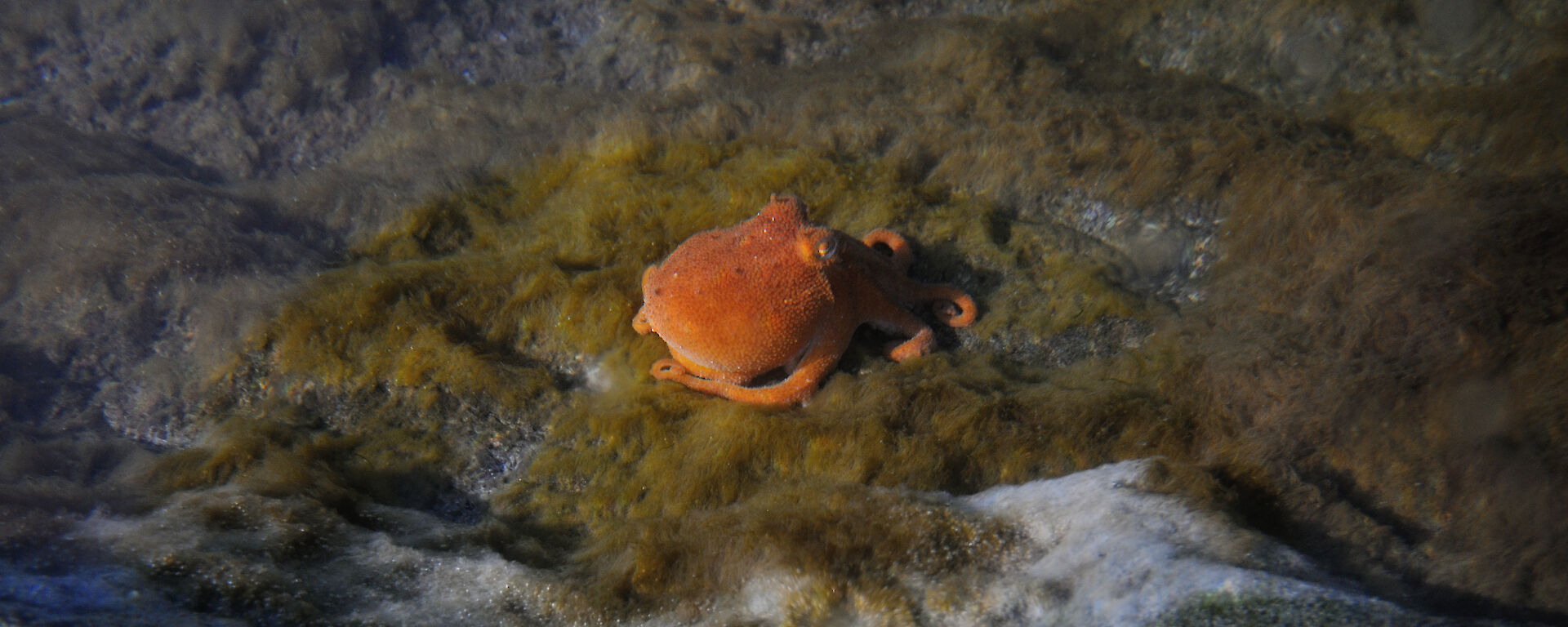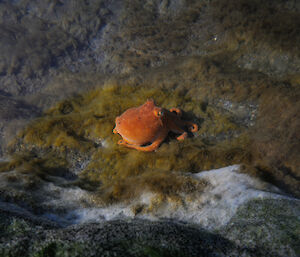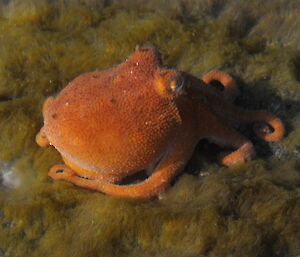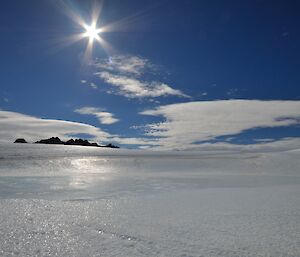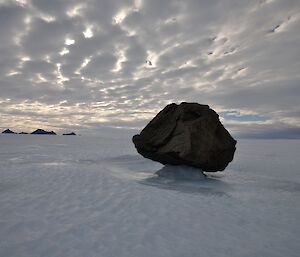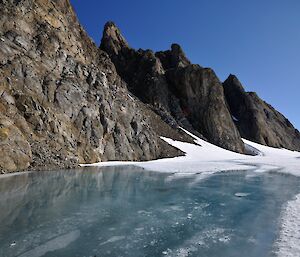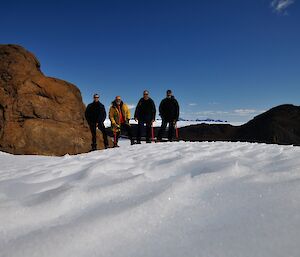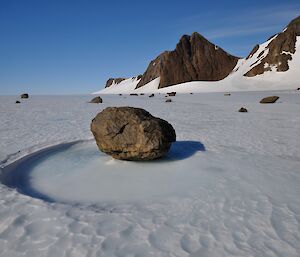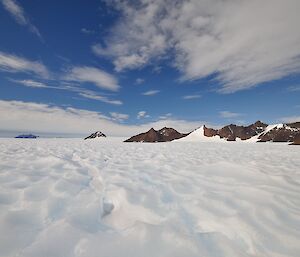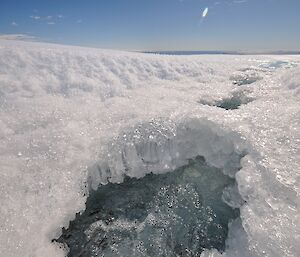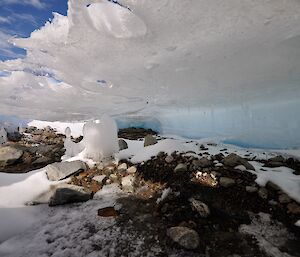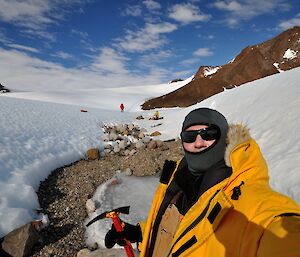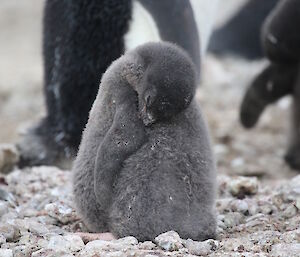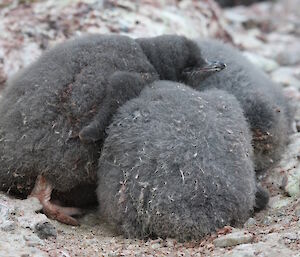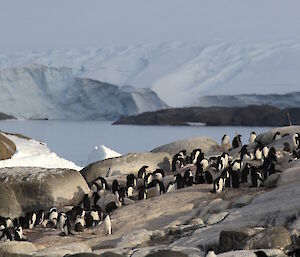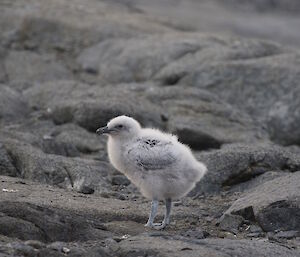While wandering around East Arm taking in the scenery recently, Pete spotted a local resident just out from beneath the fast ice. Trying unsuccessfully to blend into the dark substrate, this octopus eyed his observer suspiciously then at the first opportunity made a quick exit into deeper water.
After consulting the expert (Google) we identified this brilliant orange specimen (with faint red raised spots) as a Stuaranga octopuseus. Actually, after a longer more detailed look, we have come to the conclusion that it is more likely to belong to one of the previously identified genera of octopuses that inhabit the Southern Ocean such as Pareledone.
Pareledone is the most abundant and diverse octopus genus in the Antarctic region. Members of this genus are generally small and restricted to the continental shelf and slope margins of Antarctica and the surrounding sub-Antarctic islands. We thought our Mawson octopus looked similar to the East Antarctic Pareledone framensis or the circum-polar species Pareledone charcoti.

